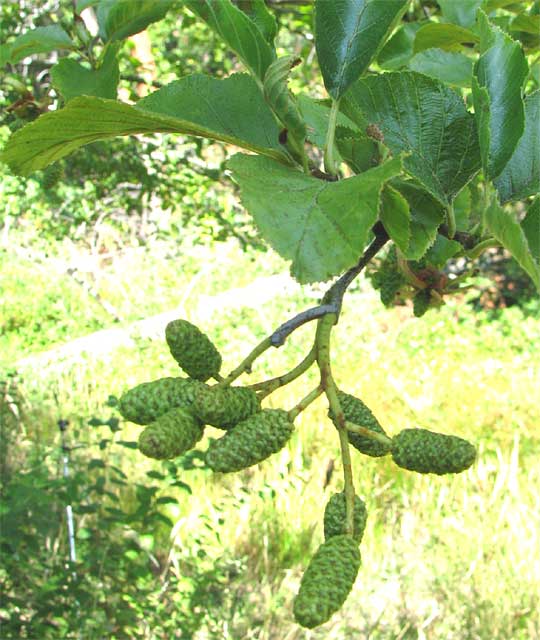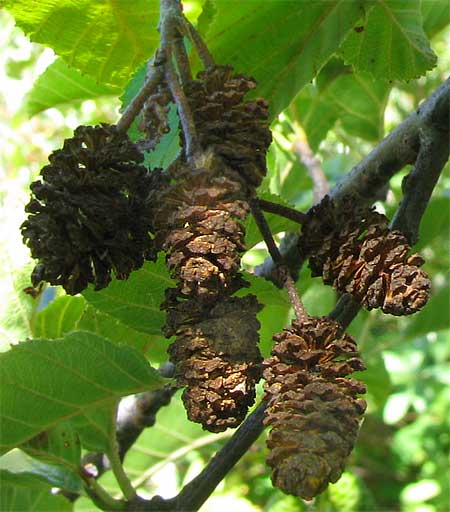Excerpts from Jim Conrad's
Naturalist Newsletter
from the September 6, 2009 Newsletter, issued from the Siskiyou Mountains west of Grants Pass, Oregon:
WHITE ALDERS AT THE POND
In a marshy spot beside the pond a 20-ft White Alder, ALNUS RHOMBIFOLIA, bears this year's green "cones" as well as last year's brown, open ones. This year's are shown below:

Alders, members of the Birch Family, bear male and female flowers separately but on the same tree. Male flowers emerge in the spring in slender catkins while female flowers occur in shorter, pistillate catkins. The mature pistillate catkins are often called strobili (singular strobilus or strobile). You can see last year's open, empty strobili still on the tree below:

Alder leaves are similar to those of other members of the Birch Family -- birch, hazelnut, hornbeam, hophornbeam. Alder catkins/strobili are completely different, though. Eastern North America also has its alders but they are shrubs or rarely small trees.
White Alders are wonderful trees, fast-growing, lush trees needing lots of sunlight and water. They're prettily formed, so dense that they produce a chilly shade, and even their leaves are somewhat fragrant if you bruise them. To top all that off, alders have a symbiotic relationship with the nitrogen-fixing bacteria Frankiella alni, which convert atmospheric nitrogen into soil-soluble nitrates used not only by the alder but also by the surrounding general plant community.
Medicinally, Alder-leaf infusions have been used against fleas, for burns and as an eyewash. Native Americans used the tree's straight shoots for arrows, wove its roots into baskets, and made red dye from its bark.
White Alders are native from Washington State through California, east to Montana and Nevada.